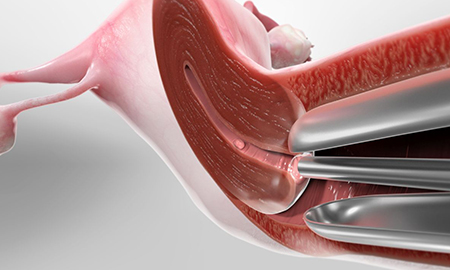Hysteroscopy
Laparoscopic Surgery (Obs & Gyn)
Fertility Treatment & IVF Consultation
Hysteroscopy
Family Planning and Contraceptive Services
Maternal Care & Routine Check-ups
Abortion / MTP (Medical Termination of Pregnancy)
High-Risk Pregnancy Management
D&C (Dilation and Curettage)
Antenatal Care
Normal Vaginal Delivery (NVD)
Hysteroscopy
Hysteroscopy is a safe, minimally invasive procedure that allows a gynaecologist to examine and treat conditions inside the uterus using a thin, lighted instrument called a hysteroscope. Inserted through the vagina and cervix, it provides a clear view of the uterine cavity to diagnose and manage issues like fibroids, polyps, adhesions, or abnormal bleeding. Often performed as a day-care procedure, hysteroscopy can be either diagnostic or operative, with little to no recovery time.

Conditions Treated with Hysteroscopy
- Uterine polyps or fibroids
- Abnormal uterine bleeding
- Endometrial thickening
- Uterine septum
- Intrauterine adhesions (Asherman’s Syndrome)
- Infertility evaluation
- Removal of retained products of conception
- Postmenopausal bleeding investigation
Symptoms That May Require Hysteroscopy:
- Heavy or irregular menstrual bleeding
- Bleeding between periods
- Infertility or repeated miscarriages
- Bleeding after menopause
- Suspected polyps or fibroids seen on ultrasound
- Severe cramping or pain during periods
Common Causes of Uterine Issues:
- Hormonal imbalances
- Fibroids or polyps
- Scar tissue from previous surgery or infections
- Congenital abnormalities (e.g., septate uterus)
- Endometrial overgrowth or irregular shedding
Can These Conditions Be Prevented?
While not all uterine conditions are preventable, you can reduce your risk with:
- Regular gynaecological check-ups
- Prompt treatment of infections
- Healthy lifestyle and hormone balance
- Monitoring changes in menstrual patterns
- Early evaluation of abnormal symptoms
